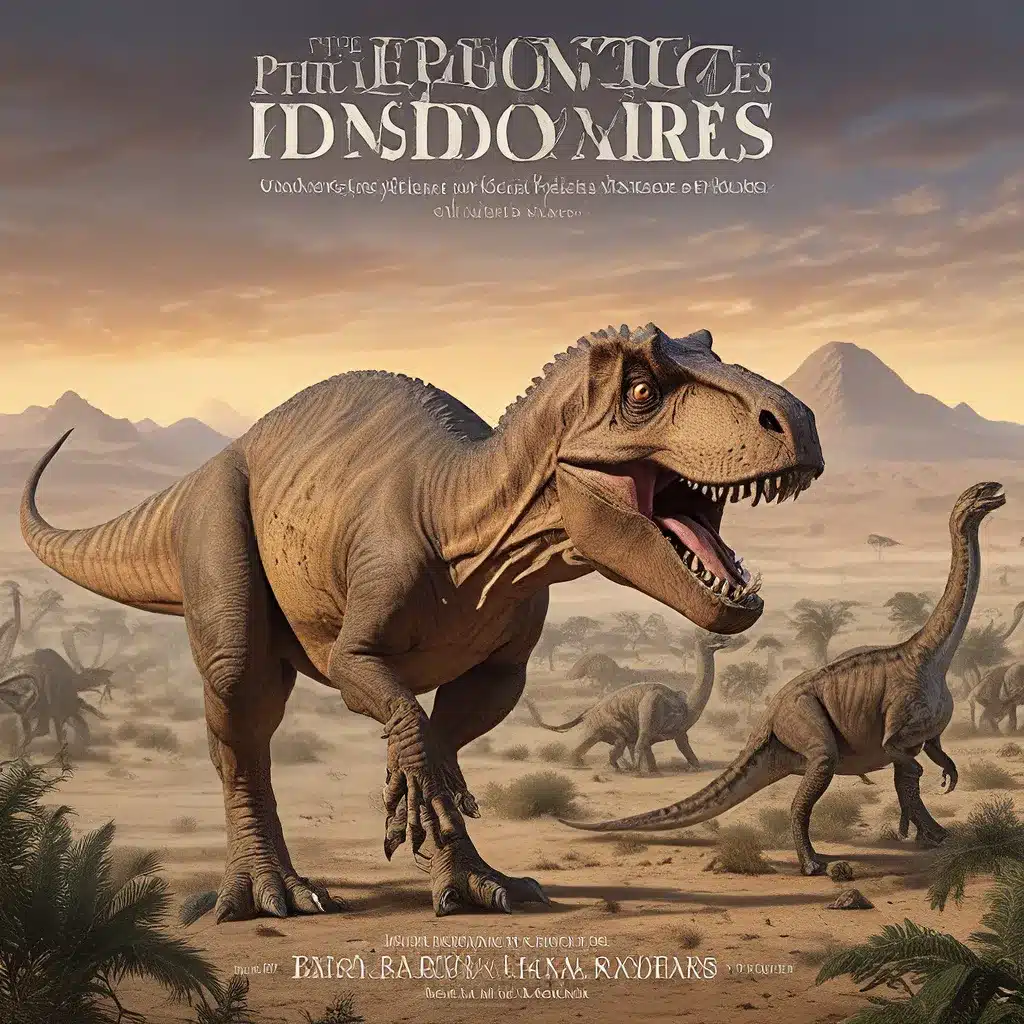
The Dinosaur Dominance Debate: Exploring the Intrigues of Ancient Ecosystems
The prehistoric world was a stage upon which the grand drama of evolution played out, with dinosaurs as the captivating protagonists. These enigmatic creatures, once the undisputed rulers of the land, have long fascinated scholars and enthusiasts alike. But beyond their physical prowess and iconic appearances, the true complexities of dinosaur existence lie in the intricate web of ecological relationships and political dynamics that governed their ancient domains.
Delving into the Mesozoic Era, a time when dinosaurs reigned supreme, reveals a landscape teeming with paradoxes and contradictions. Contrary to the popular perception of dinosaurs as solitary, aggressive behemoths, accumulating evidence suggests a more nuanced understanding of their social structures and behavioral patterns.
Recent paleontological discoveries have unearthed fascinating insights into the cooperative and hierarchical nature of dinosaur communities. From the flocking behavior of Ornithomimids to the pack-hunting strategies of Dromaeosaurids, these findings challenge the long-held notion of dinosaurs as isolated, territorial creatures.
Moreover, the study of dinosaur nesting sites has unveiled a surprising level of parental care and social bonding within certain species. The discovery of multi-generational nesting grounds and the evidence of hatchling-rearing behaviors suggest a level of familial organization that defies the traditional depiction of dinosaurs as cold-blooded, indifferent parents.
Unveiling the Complexities of Dinosaur Societies
Beneath the surface of these prehistoric ecosystems, a complex web of power dynamics and political maneuverings can be discerned. Dominance hierarchies, resource competition, and even interspecies alliances were likely integral components of the dinosaur world.
Paleontological evidence suggests that larger, apex predators may have exerted significant influence over their environments, subjugating or even exploiting smaller dinosaur species for their own benefit. The discovery of feeding sites and prey remains has shed light on the power struggles that likely unfolded within these ancient communities.
Interestingly, the coexistence of herbivorous and carnivorous dinosaurs within the same ecosystems points to the intricate balance of resource distribution and niche partitioning. Cooperative feeding patterns and resource-sharing strategies may have been essential for the survival and stability of these diverse communities.
| Dinosaur Species | Behavioral Traits | Ecological Relationships |
|---|---|---|
| Tyrannosaurus Rex | Apex predator, solitary hunter | Potential exploiter of smaller dinosaur species |
| Triceratops | Herbivore, herd-dwelling | Cooperative feeding, resource-sharing with other herbivores |
| Velociraptor | Pack-hunting carnivore | Possible alliances or competition with other predatory species |
Unraveling the Mysteries of Dinosaur Diplomacy
As paleontologists delve deeper into the fossil record, they uncover a multifaceted and interconnected world of dinosaur interactions that challenge our traditional perceptions. Conflict, cooperation, and negotiation were likely integral components of the dinosaur experience, shaping the dynamics and power structures within these ancient ecosystems.
Emerging theories suggest that communication and social signaling played a vital role in the political landscape of the dinosaur world. Vocalizations, visual displays, and even scent-marking behaviors may have been employed to assert dominance, establish territories, and negotiate resource-sharing agreements.
Moreover, the fossil evidence of interspecies interactions and cooperative behaviors raises intriguing questions about the diplomatic and negotiation skills of these prehistoric creatures. Coexistence and resource-sharing strategies may have been essential for the survival and prosperity of diverse dinosaur communities.
Implications for Modern Understanding
The complex social dynamics and political intrigues of the dinosaur world hold profound implications for our understanding of ancient ecosystems and their relevance to the present day. These insights challenge the simplistic, often one-dimensional depictions of dinosaurs and shed light on the nuanced, multifaceted nature of their existence.
By exploring the intricate relationships and power structures within prehistoric communities, we can gain valuable lessons about the importance of cooperation, resource management, and conflict resolution in the face of environmental challenges. These lessons can inform our approach to contemporary environmental and societal issues, fostering a more holistic and empathetic understanding of the complex systems that shape our world.
Furthermore, the study of dinosaur politics and social dynamics can inspire a renewed appreciation for the richness and diversity of the natural world, both past and present. By embracing the paradoxes and complexities inherent in the dinosaur experience, we can cultivate a deeper respect for the intricate tapestry of life that has unfolded throughout the ages.
Conclusion: Embracing the Paradoxes of the Prehistoric Past
The prehistoric world of dinosaurs was a realm of paradoxes and contradictions, where power, cooperation, and negotiation shaped the dynamics of ancient ecosystems. As paleontologists and researchers continue to unravel the mysteries of these enigmatic creatures, they reveal a multifaceted and interconnected story that challenges our traditional perceptions and offers invaluable insights into the complexities of life on our planet.
By embracing the paradoxes of the prehistoric past, we can cultivate a deeper understanding of the dynamic relationships that govern the natural world, both past and present. This knowledge can inform our approach to modern environmental and societal challenges, fostering a more holistic and empathetic perspective on the intricate tapestry of life that continues to unfold around us.


